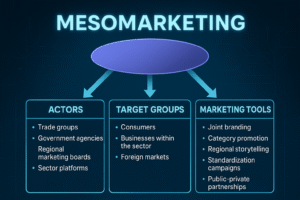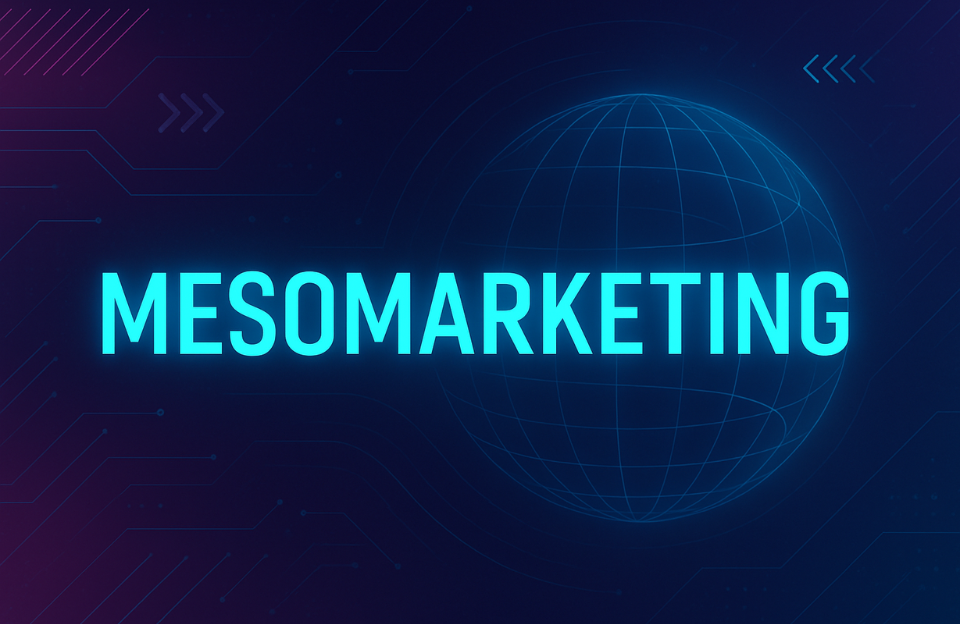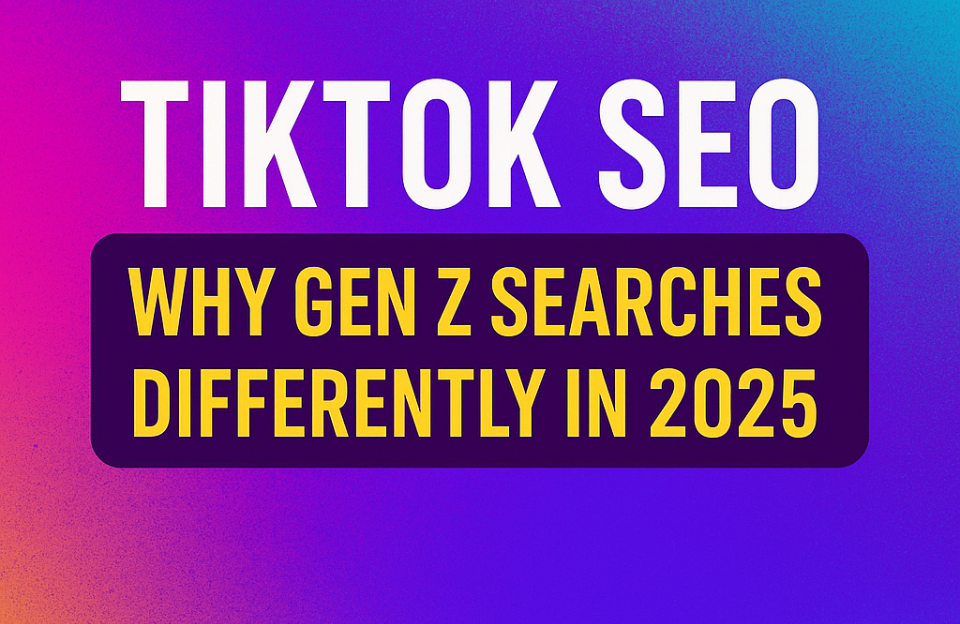Marketing doesn’t operate in a vacuum. While micromarketing targets individuals and macromarketing focuses on entire societies, there’s an important middle layer that often gets overlooked: mesomarketing.
In this article, we’ll cover:
- What mesomarketing is
- How it fits between micro and macro
- Real-world examples
- Why it matters in strategy and policy
- Common challenges and implications
What Is Mesomarketing?
Mesomarketing refers to marketing activities and strategies carried out by organizations, institutions, or entire industries that influence how groups of companies or sectors interact with markets.

It operates at the “meso” (intermediate) level between the individual company (micro) and the societal system (macro).
Where micromarketing might focus on what a company does, mesomarketing focuses on what a sector, trade organization, region, or group of businesses does collectively.
Definition:
“Mesomarketing involves marketing actions and coordination by intermediate actors — such as trade associations, governments, or regional networks — that influence multiple companies or sectors collectively.”
Micromarketing vs. Mesomarketing vs. Macromarketing
| Level | Focus | Example |
|---|---|---|
| Micromarketing | Individual customer/company | Personalized email campaign from a single brand |
| Mesomarketing | Sector, region, industry cluster | Joint tourism marketing by a country or province |
| Macromarketing | Economy/society as a whole | National campaigns for public health or sustainability |
Real-World Examples of Mesomarketing
1. Industry Associations
A chamber of commerce promoting local businesses through seasonal campaigns is engaging in mesomarketing. For example:
- A retail federation organizing a national “Black Friday” marketing push.
- A food industry board promoting local produce and traceability.
2. Regional Tourism Boards
The Visit Holland platform markets the Netherlands as a whole, benefitting thousands of travel companies — even though it’s not promoting any single brand. This is coordinated mesomarketing at the destination level.
3. Agricultural Cooperatives
Groups like dairy or fruit cooperatives engage in mesomarketing when they promote product categories (e.g. Dutch cheese or South African citrus) collectively, helping all members.
4. Sustainability Certifications
Programs like Rainforest Alliance or Fairtrade promote entire standards and sectors, encouraging companies to align with certain values. While implemented at company level, the message is meso.
5. Educational Institutions & Sectors
A university marketing campaign to attract international students isn’t just branding one degree — it’s often tied to a national push to promote a country’s higher education system.
Why Mesomarketing Matters
Mesomarketing plays a critical role in aligning efforts and increasing impact:
- Amplifies reach: Joint campaigns reach larger audiences than any single brand could alone.
- Improves trust: Industry-wide initiatives often appear more neutral and trustworthy.
- Drives innovation: Shared marketing investments foster collective innovation (e.g. digitalization in retail sectors).
- Supports economic policy: Governments use mesomarketing to guide sectors in the desired direction (e.g. digital transformation, sustainability).
The Mesomarketing Model
A simplified framework of mesomarketing coordination looks like this:
Actors:
- Trade groups
- Government agencies
- Regional marketing boards
- Sector platforms
Target groups:
- Consumers
- Businesses within the sector
- Foreign markets
Marketing tools:
- Joint branding
- Category promotion
- Regional storytelling
- Standardization campaigns
- Public-private partnerships
Mesomarketing is less about selling and more about structuring and scaling.
Mesomarketing and Public-Private Partnerships (PPP)
Many mesomarketing efforts are public-private collaborations, especially in areas like:
- Export promotion
- Tech ecosystems
- Tourism development
- Circular economy initiatives
Example:
Brainport Eindhoven, a tech region in the Netherlands, combines business, government, and academia to market the region internationally as a hub for innovation.
Challenges in Mesomarketing
- Fragmentation: Competing interests within a sector can limit coordination.
- Funding: Collective campaigns require shared investment, which not all parties are willing to provide.
- Lack of measurability: Attribution is harder — it’s unclear which company benefits most from a joint effort.
- Brand dilution: Individual brands may fear losing their identity in collective messaging.
Mesomarketing in the Digital Era
Digital tools have supercharged mesomarketing opportunities:
- Regional marketplaces (e.g. “Support your locals” platforms)
- Cross-sector social media campaigns
- Digital education portals (e.g. Study in Holland)
- Online co-branding campaigns between cities, brands, and government
Technology makes it easier to coordinate, measure, and target — but it also demands more alignment across stakeholders.
Conclusion: The Strategic Middle Layer
Mesomarketing may not always be visible to consumers, but it shapes the environment in which micromarketing happens and enables broader macromarketing goals.
For marketers, it represents an opportunity to:
- Align with industry-wide goals
- Collaborate across sectors
- Amplify impact through collective branding
Mesomarketing is where strategy, structure, and collaboration come together to scale impact — from the inside out.




